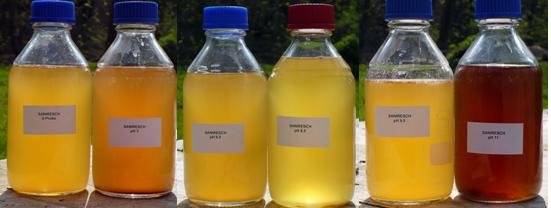Demystifying Cranberry, Urine Odor, and Color Variations
Have you ever come across the age-old wisdom that cranberry is a potent remedy for urinary tract infections (UTIs)? In this post, we embark on a journey to explore the reasons behind urine odors, the potential effectiveness of cranberry in treating UTIs, and the factors influencing the color of our urine.
A lot of people heard this, and so many people do not even know if they should believe it or not. This saying was passed down by some people's grandparent, and surprisingly, when you go to people's houses, they barely have any cranberry juice remaining in the fridge as everyone is trying to utilize the great importance of the juice.
obgyn
Cranberries have been utilized as a medicinal remedy for centuries, with applications ranging from treating bladder, stomach, and liver disorders to addressing conditions like diabetes and wound healing. In the 1800s, astute physicians observed that the consumption of cranberries led to the production of Hippuric acid in urine, a byproduct of the metabolism of Quinic Acids. This observation laid the foundation for the hypothesis that cranberries might be effective in treating UTIs, as the acid can potentially exhibit antimicrobial properties.
In the 1930s, this hypothesis was tested and it was seen that cranberry eaten in several hundred grams could drop the pH of urine but it wasn't visible when ingested into the body. A single glass of cranberry ingested barely changes urine acidity and these cannot have effect on bacteria.
Cranberries, along with blueberries, contain compounds known as proanthocyanidins, which have been suggested to hinder the ability of bacteria, including E. coli, to attach to the epithelial cells in the urinary tract. When bacteria's fimbriae bind to these epithelial cells, it can result in UTIs, characterized by symptoms like groin pain, painful urination, and foul-smelling urine. When a UTI progresses to the kidneys, it becomes a severe threat, potentially causing organ damage and bloodstream infections. This explains the persistent belief in cranberry's UTI-fighting capabilities, but evidence remains inconsistent. Comparatively, antibiotics prove to be more effective and rapid in treating UTIs compared to cranberry.
Now, let's turn our attention to the captivating world of urine. Urine was originally blood before undergoing filtration by the kidneys, allowing waste products to mix with water. Approximately 95% of urine comprises water, 2% urea, and the remaining 3% includes creatinine, uric acid, chloride, sodium, potassium, and other substances. When we consume food or drink, these substances break down into molecular remnants, which are absorbed into the bloodstream and subsequently filtered by the kidneys into urine. Certain foods and beverages can alter the odor of your urine, while others leave it odorless. This variation occurs because molecules responsible for unpleasant odors are eliminated through urine, among other factors like infections.

Wikimedia
When it has to do with urine colors, having a seemingly colorless urine signifies over-hydration and this is because the normal color of urine is meant to be pale yellow. Urochrome is a waste product from the break down of heamoglobin, and it is responsible for the Goldilocks zone pale color in Urine. When people have orange urine, it can come from medication, or from beta carotene which is found carrots and other foods. People who have brown urine possibly suffer from kidney or liver disease, as well as from toxic doses of medication. Eating food like beets can cause urine to be red or pink, it can also be as a result of blood in urine.
The world of urine holds mysteries that extend beyond its daily excretion. While cranberries have long been associated with UTI relief, their efficacy remains uncertain in the scientific world. As for urine, its color and odor can serve as indicators of our overall health and dietary choices. Understanding these nuances can help us better appreciate the intricate processes occurring within our bodies every day. If you realize a change in Urine color or odor, it is important that you visit the doctor for proper examination and treatment.
https://www.ncbi.nlm.nih.gov/pmc/articles/PMC5378705/
https://www.ema.europa.eu
https://gfp.people.uic.edu/pdf/AllisonTurner_Dissertation_2006.pdf
https://infeksiyon.org/cranberry-for-prevention-of-urinary-tract-infectiontime-to-move-on/
https://www.ncbi.nlm.nih.gov/pmc/articles/PMC3684265/
https://www.ncbi.nlm.nih.gov/pmc/articles/PMC4320558/
https://www.mdpi.com/1420-3049/25/15/3523
https://www.ncbi.nlm.nih.gov/pmc/articles/PMC5880328/
https://www.ncbi.nlm.nih.gov/books/NBK538339/
https://www.ncbi.nlm.nih.gov/pmc/articles/PMC3002398/
https://www.health.harvard.edu/newsletter_article/red-brown-green-urine-colors-and-what-they-might-mean
https://www.healthpartners.com/blog/what-your-urine-says-about-your-health/
https://www.healthline.com/health/what-causes-orange-urine
https://www.mayoclinic.org/diseases-conditions/urine-color/symptoms-causes/syc-20367333
Thanks for your contribution to the STEMsocial community. Feel free to join us on discord to get to know the rest of us!
Please consider delegating to the @stemsocial account (85% of the curation rewards are returned).
Thanks for including @stemsocial as a beneficiary, which gives you stronger support.
Congratulations @elity-sitio! You have completed the following achievement on the Hive blockchain And have been rewarded with New badge(s)
Your next target is to reach 30000 upvotes.
You can view your badges on your board and compare yourself to others in the Ranking
If you no longer want to receive notifications, reply to this comment with the word
STOP